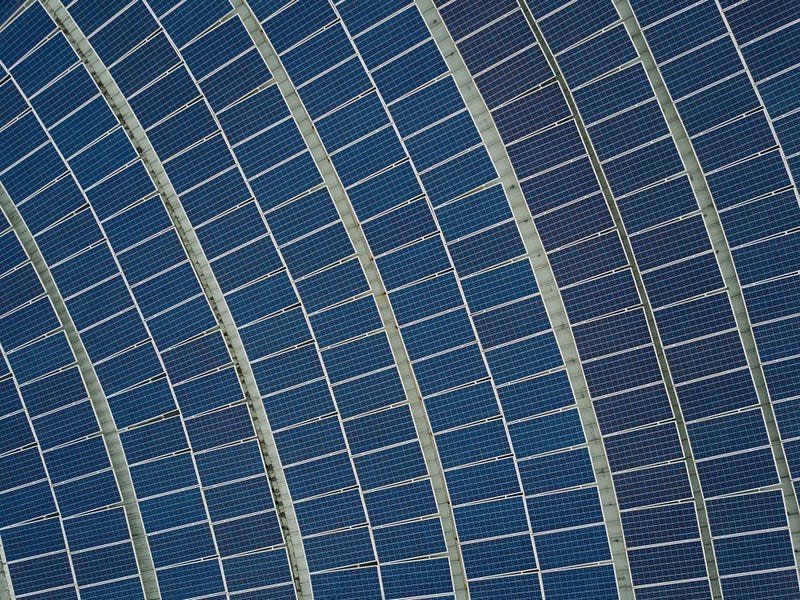The Future of Solar: Nighttime Energy Generation Technology
Written on
Chapter 1: Introduction to Innovative Solar Technology
The advent of a groundbreaking solar panel technology is poised to transform energy generation. While solar power is heralded for its low carbon emissions, its inconsistency presents significant challenges. The reliance on sunlight means that energy production is hindered during nighttime or on cloudy days. To mitigate this, large solar farms and extensive grid-scale batteries are constructed to store excess energy. However, this approach has considerable ecological repercussions. While solar remains one of the cleanest energy sources, it is not without its flaws. To avert a climate crisis, advancements are essential.
Researchers from the University of New South Wales have made significant strides in addressing these limitations by developing solar panels capable of generating usable energy even in the shade and at night. This innovation raises the question: can this new technology position solar energy as the ultimate renewable resource?
Before diving into the specifics of these advanced panels, it’s important to grasp the constraints of traditional solar technology. Currently, conventional solar panels convert just over 20% of visible light into usable energy. This is why their output diminishes significantly during overcast conditions or at night.

Chapter 2: The Challenges of Current Solar Systems
To compensate for the limitations of traditional solar panels, solar farms must produce energy far exceeding demand under optimal conditions. The surplus energy is then stored in large mega-watt-hour batteries, allowing for distribution even when the sun isn’t shining.
However, this necessitates larger solar installations and substantial battery systems, which increase the carbon footprint associated with their manufacture. Moreover, the expansion of solar farms leads to habitat loss and contributes to environmental degradation from mining operations.
Despite these environmental costs, solar energy is still vastly preferable to fossil fuels. If we could minimize the size and impact of solar farms, we could enhance their ecological friendliness significantly.
The team at the University of New South Wales has pioneered a novel approach. Rather than solely enhancing efficiency, they have turned their attention to harnessing infrared light to power solar panels. This innovative method could allow for smaller solar farms and reduced grid battery requirements.

Section 2.1: Understanding Infrared Technology
Infrared light, which is invisible to the human eye, is emitted by all objects as a form of thermal radiation. This phenomenon, known as ‘black body radiation,’ means that everything at typical environmental temperatures emits infrared light continuously. Thermal night-vision technology is designed to detect this infrared radiation, allowing the identification of heat against cooler backgrounds.
The team from New South Wales has ingeniously adapted the thermoradiative diode technology used in night-vision systems to generate power from infrared light. Consequently, these innovative solar panels can convert ambient heat into electrical energy, enabling them to produce power even during cloudy days and at night.
The potential applications for this technology are vast. Multilayer solar panels, which feature several layers of cells that absorb different wavelengths of light, could significantly benefit from integrating infrared technology. By employing this method, the panels could operate efficiently during both day and night.

Section 2.2: Potential Benefits of Infrared Solar Panels
The ability to harness both visible and infrared light means these panels can maintain a steady energy output, enhancing efficiency and energy density compared to traditional solar panels. This could allow for the creation of smaller solar farms and grid systems while achieving equivalent energy output.
The environmental and economic advantages are clear: reduced mining, diminished land usage, and lower operational costs make this technology appealing to a wide range of stakeholders, from investors to environmental advocates.
However, it is crucial to note that this technology has yet to reach its full potential. Current prototypes of infrared solar panels are operating at only 1.8% efficiency, generating approximately 2.26 mW per square meter—roughly 0.00023% of the output of conventional solar panels.

Chapter 3: Future Outlook and Applications
Researchers believe that it may be feasible to enhance the efficiency of infrared solar technology to reach around 10% of a standard solar panel’s output. In optimal conditions, this could yield approximately 100 W per square meter, which is comparable to the energy required to power a desktop computer.
While this output may seem modest, when applied to larger solar farms—such as a 10 MW installation—this technology could provide enough power for an additional 833 homes, significantly boosting energy availability.
While these compact, eco-friendly solar farms are not yet a reality, the potential applications extend beyond traditional solar energy. For instance, industries that emit large amounts of infrared radiation—like nuclear power plants—could leverage this technology to capture and convert waste heat into usable energy, enhancing overall efficiency.
In summary, infrared technology in solar panels represents an exciting frontier in renewable energy. While still in its developmental stages, this innovation holds the promise to enhance solar power’s efficiency and environmental sustainability. It is crucial that researchers continue to advance this technology to unlock its full potential.
This first video discusses how novel solar panels are capable of generating power at night, providing insights into this transformative technology.
The second video explores how solar panels that can function at night have the potential to supply energy continuously, revolutionizing our approach to renewable energy.